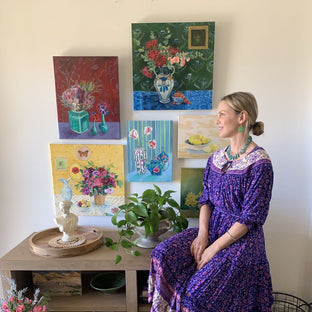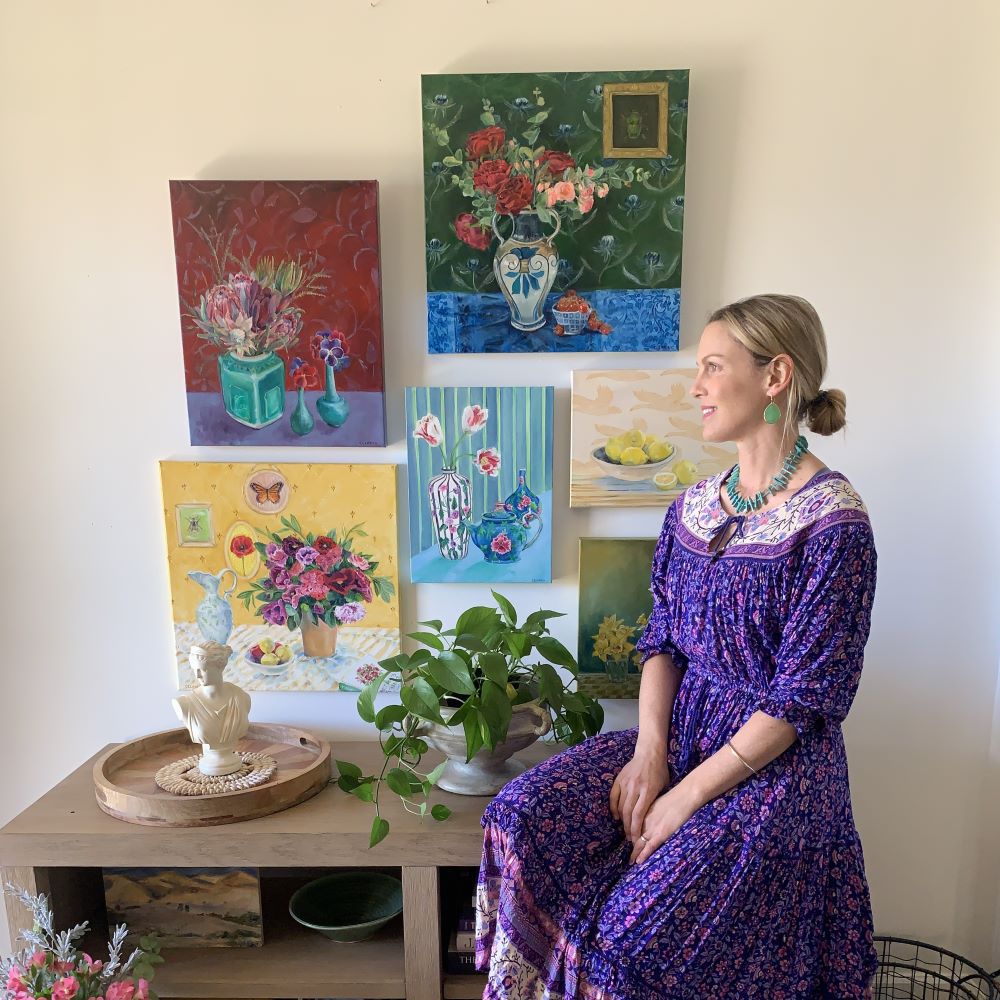A Creative Interview With Artist Alana Clumeck



"I don’t limit myself to a single genre, because there’s just too much beauty in the world to be confined that way."
Artist Alana Clumeck creates contemporary animal and still life paintings rich in symbolic meanings. Raised in Australia by artistic parents who ran a pottery studio from their home, Alana was surrounded by creativity from an early age. Her own journey into painting began while pregnant with her second child, when a deep need for self-expression led her to pick up a brush. What started as personal therapy soon became a passionate career. Alana now paints from her home studio, where she balances creative flow with the routines of motherhood. When she is not making art, Alana enjoys adventuring outdoors with her children.
In this interview, Alana shares how faith, motherhood, and the beauty of natural world inform her art.
What defines you as an artist?
I’m a wife, mother, nature lover, and Christian—those four parts really define who I am at my core. Art has become a beautiful way for me to explore those passions and express them on canvas.
What are you most proud of—whether in art or another part of your life?
Without a doubt, I’m most proud of my children—they are truly my greatest creation. Seventeen years ago, I moved to the United States from Australia with just a backpack. Now, I have a husband, two wonderful kids, a dog, two cats, and a home filled with love (and stuff!). It’s funny and humbling to reflect on how far we’ve come. My husband and I have built a life and a family together from the ground up, and that journey is something I’m incredibly proud of.
Do you have any studio rituals that help you get into a creative flow?
Yes, I definitely have a few studio rituals that help me get into a creative flow. When I’m dreaming up a new collection, I often start by heading to the library. I’ll check out a stack of books and gather images for inspiration—it’s a bit of a research phase that helps me immerse myself in the theme or feeling I want to capture.
Before I begin a new collection or painting, I always clean my studio. A tidy workspace helps clear my mind and makes it easier to focus, though by the end of a painting, the space is usually a beautiful mess!

How do you structure your day?
I’ve learned that creating art requires uninterrupted blocks of time. Time management is key for me. Before I dive into a new piece, I try to clear my schedule as much as possible so I can give it my full attention and really lose myself in the process.
Where do you find inspiration for your art?
Much of my inspiration comes from my faith and the beauty of creation—both are deeply woven into my art. I often incorporate symbolism into my work, using focal points—usually animals—to represent specific feelings, Bible verses, or messages I want to share. Repetitive patterns and intricate details also show up frequently, inviting viewers to pause, look closer, and uncover deeper layers of meaning.
I don’t limit myself to a single genre, because there’s just too much beauty in the world to be confined that way. If I had to describe my style, I’d say it’s rooted in the idea of “creation”—in every sense of the word. I move between oil and acrylic depending on the texture or mood I’m trying to create, and I love playing with the relationship between pattern and subject to spark curiosity and reflection.
Tell us about your evolution as an artist.
I kind of stumbled into painting during a very vulnerable season of life. When I was pregnant with my second child, I experienced perinatal depression, and in the midst of that, I felt a deep need to create. I picked up a paintbrush, and what started as a form of therapy quickly became a passion I couldn’t walk away from.
With no formal training, I’ve learned by doing—often painting during nap times or in the quiet hours of the night. In those early days, my work was raw, expressive, and deeply intuitive. It reflected where I was emotionally, and painting became a lifeline.
As my practice matured, so did my purpose. Animals, once simple subjects, began to take on symbolic roles. My paintings started to carry layered meanings—drawing on scripture, personal emotion, and life’s many transitions. I began incorporating patterns and repeated motifs that invite viewers to pause and look deeper. Over time, my compositions have grown more intricate, weaving together themes of faith, motherhood, and the beauty of the natural world.
In many ways, my art has evolved from spontaneous self-expression into thoughtful storytelling—each piece grounded in intention, meaning, and a reverence for creation.
How do you decide when an artwork is finished?
It’s actually simpler than you might think. Every painting goes through a few “ugly stages,” where things feel off or unfinished. But then there’s a moment when everything starts to click—the colors, the composition, the feeling behind it—and I just know it’s time to stop. There’s a sense of balance, like the piece is saying, “I’m done.” Learning to recognize that moment has been an important part of my process.
What is the most interesting observation someone has made about your work?
One of the most meaningful observations I’ve received is that the eyes in my animal paintings feel like they have souls. I find that especially interesting because each painting is created with a lot of thoughtful intention. For me, the process is calming and grounding, and it’s encouraging to know that others can feel that quiet depth through the eyes. It’s often where the emotion of the piece really lives.
Is there an artwork from another artist that has had a significant impact on you?
Absolutely. I never attended art school, so my artistic journey really began in my teenage years by quietly watching my mom paint while she was in art school. I’d spend hours in her studio—not painting myself, just observing—and those moments stuck with me.
I didn’t actually pick up a brush until I was 30, but when I finally did, all those years of watching and absorbing came flooding back. It just clicked.
When I was 17, I moved out of my home to a large city called Perth, WA. I often found myself at the city museum, sitting in front of paintings by Monet or Renoir for hours. There was something incredibly calming about those works—their colors, light, and brushwork pulled me in and gave me a sense of peace. Those experiences had a big impact on how I approach my own art today.

What’s your favorite museum?
A couple of years ago, I went to the Art Gallery of South Australia. I was blown away by their collection of art that spans over 2000 years. The gallery offers a rich tapestry of art from Australia, Europe, North America, and Asia. It was a visual delight! I absolutely love going to art museums, I equally love looking in the art galleries of small towns, it is fun and inspiring to see what creative talent is out there.

Is there anything else you’d like to share to help viewers better understand your work?
Something I’d love viewers to understand about my work is that I don’t confine myself to a single genre or subject, and that’s very intentional. For me, painting the same thing over and over would stifle my creativity. I know many artists find their voice in one specific theme, but I thrive on variety and exploration.
At times, my subject matter might seem unexpected or a little out of left field, but each piece is created with a genuine desire to push the boundaries of what I can express. I approach every canvas with the mindset that if you can imagine it, you can paint it. That sense of freedom and curiosity is what keeps the work alive for me, and I hope viewers feel that energy too.
Discover more artist features on UGallery
If you enjoyed this article about Alana Clumeck's life and artwork, we recommend reading about Scott Dykema's contemporary paintings.







